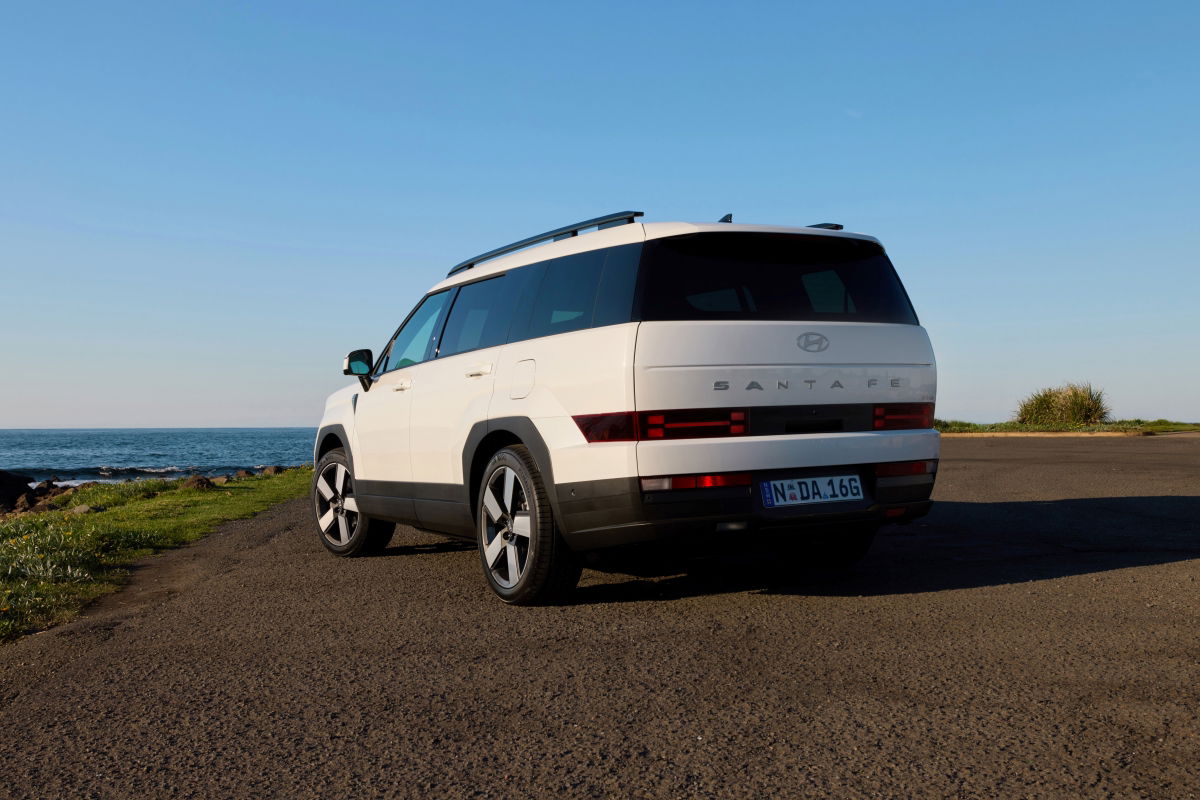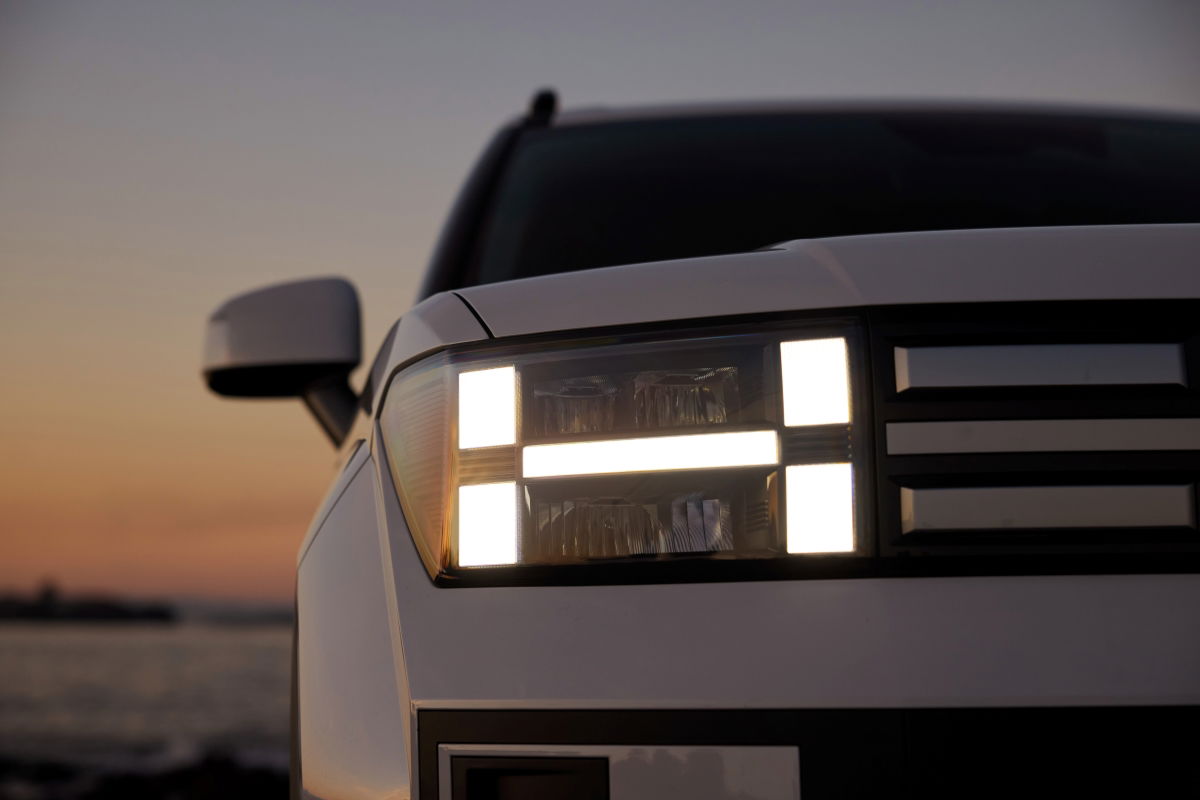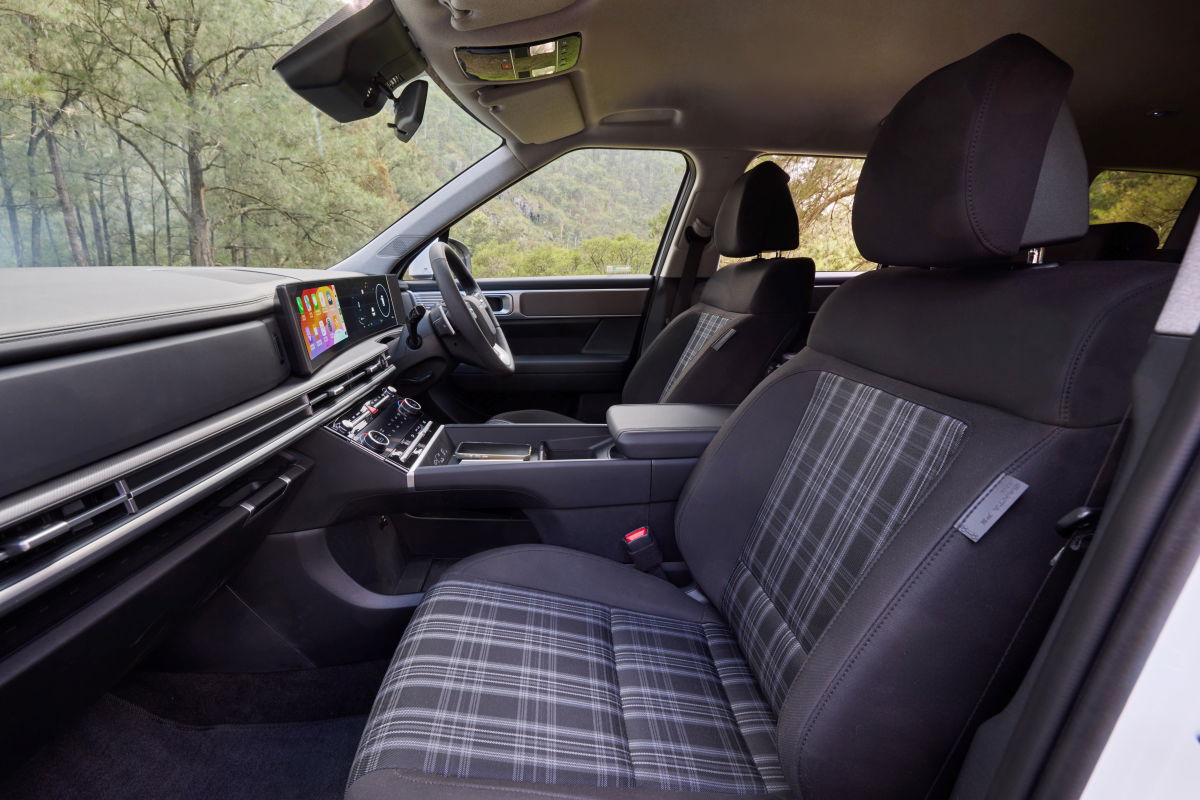
The internal codename for the new, fifth-generation Hyundai Santa Fe is ‘MX5’ and short of turning it into a compact roadster, it feels like the brand couldn’t do more to make this new model more different than the one it replaces.
There was nothing wrong with the old Santa Fe. Hyundai could have easily played it safe and applied some evolutionary styling updates and not rocked the boat. Instead, they have crafted an SUV with such bold looks it feels like something completely different – even if the oily bits underneath are very much evolutionary.
READ MORE: Hyundai confirms plans to go after the Toyota LandCruiser
When it first broke cover the obvious thing to say – and the thing lots of people said – is that it looks like a Land Rover. Unquestionably the boxier look does give some Land Rover vibes, but in the metal this is distinctly a Hyundai. The details, like the ‘H’ pattern spread throughout the design (from the headlights to the taillights and multiple elements in between) give it its own look and feel.
Hyundai uses words like “rugged” and “muscular” to describe the look, but I think it looks modern, clean and interesting – a far cry from many of its plain and simple rivals.

Inside Hyundai has been just as bold with its design, integrating more technology as well as introducing a range of leather and trim options to give it a much more premium appearance. And I’m not just talking about the range-topping, most expensive Calligraphy model either, this applies across the range, all the way down to the entry-grade model. The base model features a funky tartan trim, which is a small detail but one that elevates it above just a plain dark interior finish.
In fact, it’s that entry-level Santa Fe that we’ll focus on in this review and save the Elite and Calligraphy for another day. That’s because this base variant is the most affordable and therefore likely to be the most popular, but (spoiler alert) does such a good job anyway that it may be the pick of the range.
One of the ways the exterior and interior design changes combine to enhance the end result is that this new model is longer (+45mm) and taller (+60mm) than the previous model creating more headroom and legroom.
The other major change, which you can’t see (at least until you pop the bonnet), is that the Santa Fe is launching exclusively with a hybrid powertrain. All models are equipped with a 1.6-litre four-cylinder turbocharged petrol engine combined with an electric motor to generate 172kW of power and 367Nm of torque. It’s paired to a six-speed automatic transmission and is available in either front- or all-wheel drive (although both the Elite and Calligraphy are AWD only).
This cuts fuel consumption down to just 5.6-litres per 100km, which is an impressive return for a car capable of seating seven people in relative comfort.
A more powerful 2.5-litre turbocharged petrol engine, with no hybrid help, is due to be added to the range by the end of 2024. But, honestly, I’m not sure why you’d want something that’s going to be thirstier in an SUV that has no pretence whatsoever in being sporty. Instead the hybrid offers more-than-adequate performance, both around town and on the open road, while returning good fuel numbers.
One slightly disappointing change for this new Santa Fe is the local operations decision not to undertake its own local ride and handling program. Hyundai Australia previously tuned nearly all of its models to local conditions, fine-tuning the suspension and steering to ensure it met the unique standards of our local roads. However, this has been reduced in recent years, with only select models – such as the Ioniq 5 N – getting the same treatment. The net result of this was, with the demise of locally-made Holdens and Fords, Hyundais became the most ‘Australian’ cars you could buy. They simply rode nicer than the competition, giving them a clear advantage.
While it’s disappointing this has seemingly slowed, Hyundai Australia made the point that it now has more influence on the global tuning program and two pre-production models were sent here early in the car’s development for local evaluation.
The end result is the Santa Fe rides and handles well enough, but it’s hard not to think it could have been better with a bit more local input.

Still, that’s only a minor criticism of what is otherwise a fantastically improved car. Instead the area where Hyundai globally needs to focus its attention is its active safety warning systems. As we recently discovered in the updated Genesis GV80, this latest version of the technology provides an occasional stream of beeps and boops warning you of something only to then beep at you for taking your eyes off the road to look at the warning. It’s the single biggest issue I have with this Santa Fe and it’s hopefully something the company can rectify in the not-too-distant future.
Because aside from that, there’s really so much going for the new Santa Fe. The entry-level model we’re assessing here starts at $55,500 (plus on-road costs) which lines it up nicely against its direct rivals, such as the Toyota Kluger and Kia Sorento, while also making a value argument against more prestigious competition.
It’s not flawless but the new Hyundai Santa Fe is a masterpiece of modern SUV design.




















Discussion about this post